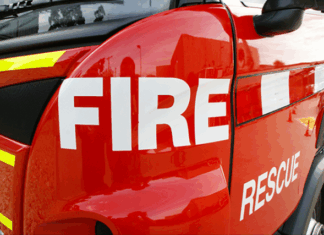Greg Wane
ERIC Larson reckons his little two-cylinder diesel tractor is the only one of its type in Australia – and he could be right.
Eric said he made his claim a few years back when his tractor collection was featured in a newspaper article.
“No one has never come forward and contradicted me, so I’m fairly confident I’m right,” Eric mused.
His DLD2 McCormick International tractor is a prototype built in 1953. It’s probably Eric’s favourite among the 56 other tractors in his collection.
He said about 100 DLD2s were made at the McCormick plant in Germany, with one sent to Geelong’s International Harvester factory at North Shore.
“A chap told me this rare tractor was around and it had been used at the Geelong factory for years. But he said the engine was really difficult to start so when they eventually got it going they would let it run it all day.
“It was used at the Geelong plant for about 10 years dragging trolleys and trailers around the factory.”
Eric eventually found the tractor in a Seymour enthusiast’s collection and bought it from him eight years ago.
“It’s a 14 horsepower and was a bit weathered and mechanically it was reasonable.”
Eric said starting the old tractor was the most difficult job of its restoration.
“By chance I was at a ploughing competition with the Geelong International Club in New South Wales and a German technician came into out display tent.”
Eric had been unsuccessful finding any information in Australia about the tractor and its starting problem.
“The tech went back to Germany and went through the factory archives and sent me eight pages of information – all in German.
“Luckily there was a German engineer who lived up the road from me and he said he would translate it for me. After he read the engine manual he said ‘I am proud to be German but why they built a tractor like this I am buggered if I know’, ”
The manual indicated the starting problem was all in the engine timing. Eric soon discovered the timings were set up wrong and it took a long time to get the settings right.
“It is a strange tractor and the key is all in the timing,” he explained.
“It has two cylinders and they both fire on one revolution and then it doesn’t fire on the second revolution. And for that reason the pumps have to inject a different amount of fuel and the second one has to give a bit more fuel to throw her through the next revolution when she doesn’t fire, so it was extremely difficult to get it timed right and get the pumps injecting the exact amount of fuel.”
Parts weren’t a problem until Eric broke a crankshaft and, considering the German factory only made a handful back in 1953, it could have put the tractor out of action for years until he found a replacement.
“Luckily a friend in the International Club found a good second-hand crankshaft in Germany.
“An innovative feature was a diff lock, which was ahead of its time, and there was no three-point linkage, just a belt drive off the PTO shaft.”
Eric said the final stage in the restoration was the paint job.
“I had to take all the components off and I resprayed them all separately to do the job properly.
“With tractors there are many nooks and crannies, so it’s hard to spray. The trick is to spray all the bits individually to start with and then reassemble and give it a final spray to cover all the bits of paint you’ve knocked off putting it back together.”
Eric said International made its first tractor in the early 1900s. They were all battleship grey until November 1936 when the company adopted the familiar bright red.
Eric, a retired dairy farmer from Gellibrand, is a foundation member of Geelong’s International Club.
“I’ve got 56 tractors at the moment, all International. As a collector I’ve stuck to the one brand.
“These were all made by International and weren’t built by anybody else and had an International name stuck on them.
“Some are still in a bit of a rough state and others are going okay. I finish one a month if all goes well but if I live to 200 I still won’t have them all done but I’m working on it.”
Get the latest news to your email inbox FREE!
REGISTER






